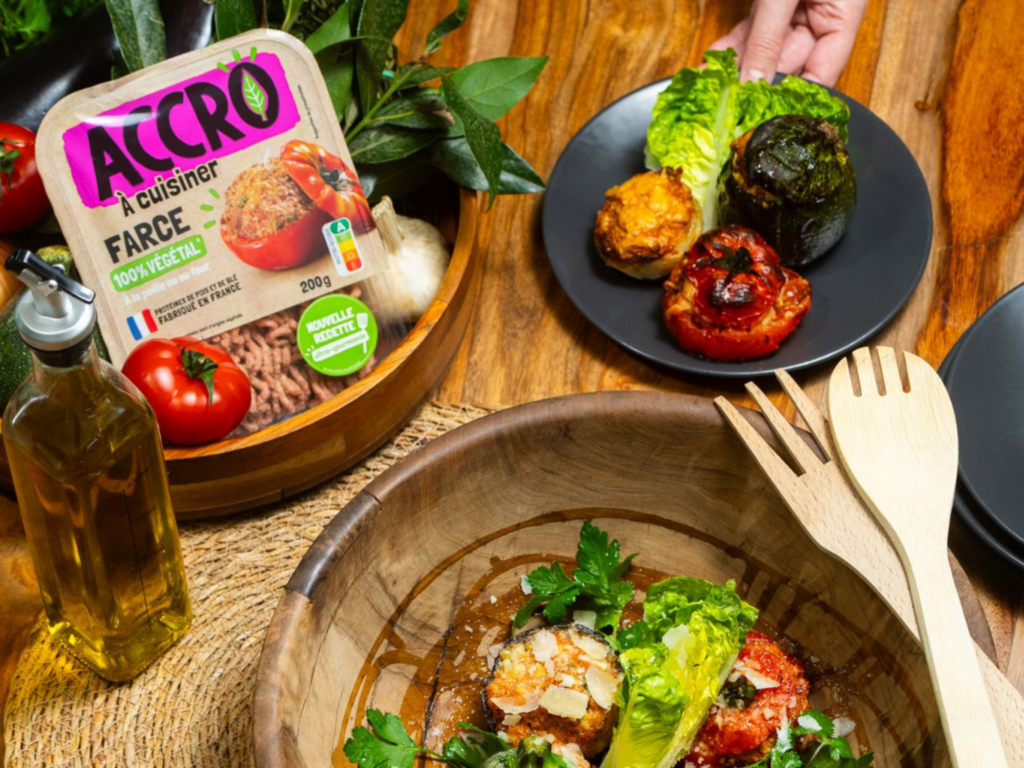
Didier Toubia, co-founder and CEO of cultivated meat pioneer Aleph Farms, believes alternative proteins are bouncing back as business models mature and regulators take notice.
For several years, complementary proteins have followed a familiar pattern described by the Gartner Hype Cycle, a framework that maps how emerging technologies rise through early excitement, fall into disillusionment, and eventually mature through practical progress.
The sector’s early surge of enthusiasm was followed by a steep correction. Investment slowed, companies consolidated, and critics questioned whether the field could deliver on its promise. What is emerging now is a smaller, stronger cohort building on firmer ground.
Recent developments suggest that complementary proteins, including plant-based, fermentation and other fungi-based, cultivated, and blended products, are beginning to climb what Gartner calls the slope of enlightenment.
Pressure on the old system, momentum in the new

Outbreaks of animal disease, climate shocks, water scarcity, and geopolitical volatility are creating mounting pressure on conventional supply chains. Natural-resource scarcity and a shrinking national cattle herd (the US herd fell to 86.7 million head in 2025, the lowest since 1951) are steadily driving meat prices upward.
These risks are opening space for alternative protein production systems and reinforcing the strategic imperative for diversification in global protein production.
Public-sector support is expanding in key markets such as the UK, Switzerland, the UAE, Japan, and South Korea through government-backed strategies and innovation programs, to name a few.
In the UAE, Abu Dhabi launched the AGWA agrifood cluster last year, with the goal of adding $24.5B to GDP and creating 60,000 jobs. Both South Korea and Japan have explicitly integrated alternative proteins into their national food security strategies, signalling growing alignment between innovation and policy.
Consumers shifting behaviours as regulators catch up

GLP-1 medications are accelerating a broader trend toward protein density, healthy indulgence and portion control. Market analyses show that menu items highlighting ‘protein’ or offering smaller portions resonate with both GLP-1 users and mainstream diners.
Governments and regulators around the world are moving from theory into practice. In the US, the Food and Drug Administration (FDA) and the Department of Agriculture (USDA) have cleared five cultivated meat producers, including three within the past six months, which is a notable acceleration.
Israel, Singapore, Australia and New Zealand have also approved cultivated meat products for marketing, while South Korea inaugurated a regulation-free special zone for cultivated meat development in 2024.
At the same time, regulators across the UK, the UAE, Switzerland, and Japan are finalising frameworks for novel proteins, paving the way for initial local market clearances.
In parallel, international efforts to harmonise standards are accelerating, with regulatory agencies collaborating through working groups to develop shared definitions, labelling requirements, and safety protocols.
As realism replaces hype, business models are maturing

The focus has shifted from branding and rapid scale to solving real unmet needs, whether at the protein supply or consumer level. Companies that once prioritised growth at any cost are now emphasising operational discipline, profitability, rigorous attention to food safety, and a sharper articulation of consumer value.
The industry is moving toward clearer value propositions and more deliberate product segmentation. Instead of trying to replace all conventional meat, leading companies are identifying where they can create distinctive value and meet specific consumer needs.
Blended products combining plant proteins and ingredients such as mushrooms are gaining traction by offering balance: the familiarity of traditional meat with the nutritional and environmental advantages of plants.
Precision fermentation players are concentrating on high-end applications where functionality, flavour performance, and nutrition justify premium positioning. Some leading cultivated meat producers, including Aleph Farms, are focusing on healthy indulgence products crafted for today’s conscious consumer seeking taste, quality, and alignment with personal values
The sector is entering a phase of greater realism. Market projections and timelines are being revised to reflect lessons learned across the alternative protein landscape.
For plant-based products – whose inflated ambitions triggered the initial hype – early growth forecasts have been tempered as the category matures. The right products are now growing steadily in well-defined categories.
Valuations across the alternative protein ecosystem have also undergone a necessary correction. Average pre-money valuations for Series B and later-stage alternative protein startups fell by 30-40% between 2021 and 2024, according to PitchBook data, as investors prioritised capital efficiency and clearer paths to profitability.
Early signs of a rebound, and the road ahead

As a result, and after two years of retrenchment, investment is flowing again to companies with proven technology and solid fundamentals. According to PitchBook, late-stage leaders in alternative proteins and novel ingredients are attracting larger checks as early-stage valuations remain under pressure.
We’ve seen five complementary protein companies with strong growth prospects and value propositions raise significant funding in the last few months, from plant-based to fermentation and fungi-based innovations.
We can prudently say that together, these trends suggest that the sector is regaining its footing and entering a more pragmatic phase of growth.
Since late 2022, many voices in the field have viewed cellular agriculture and other complementary proteins as stalled in the trough of disillusionment, the low point that follows the initial hype.
That perspective captured the mood of the moment. But the data emerging over the past year, and especially in recent months, across public support, regulatory progress, refinement of product strategies and business models, and consumer trends, suggest that the inflexion point may already be underway. The recent industry consolidation trend and investments rebound could indicate signs of maturation.
The path from disillusionment to maturity will not be automatic. It will require discipline, focus, continued technical progress, thoughtful regulation, and new models of collaboration between the public and private sectors. But the foundations are stronger today than they were two years ago.
The next phase of growth will be defined not by hype cycles but by prudent execution, relevance, and credibility. Companies delivering real value will ultimately carry the sector to the plateau of productivity, where complementary proteins become a lasting part of a secure and sustainable global food system.
The post Op-Ed: After the Hype, Signs That Complementary Proteins Are Entering A New Phase appeared first on Green Queen.
This post was originally published on Green Queen.